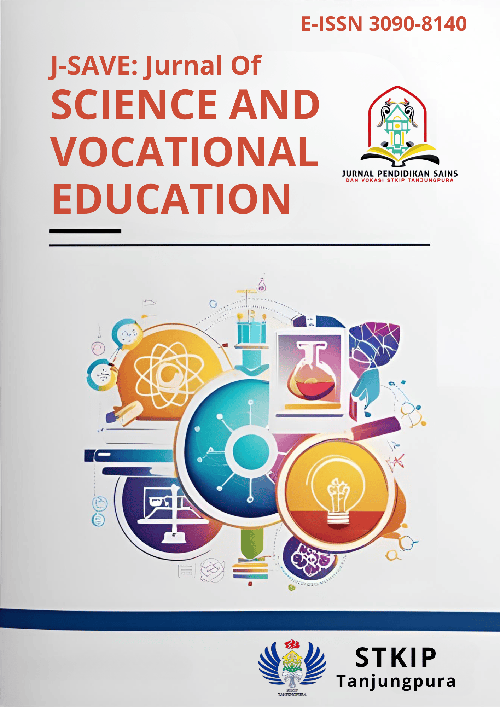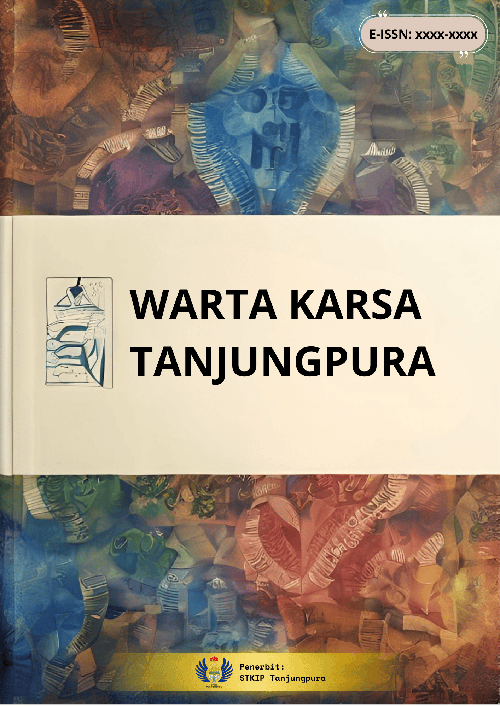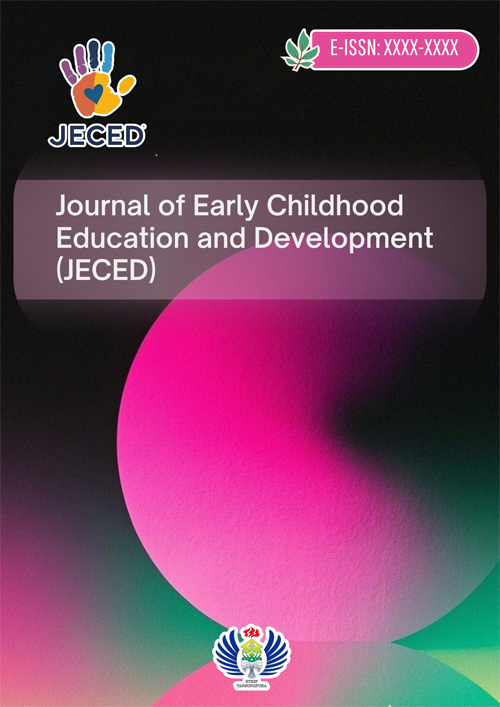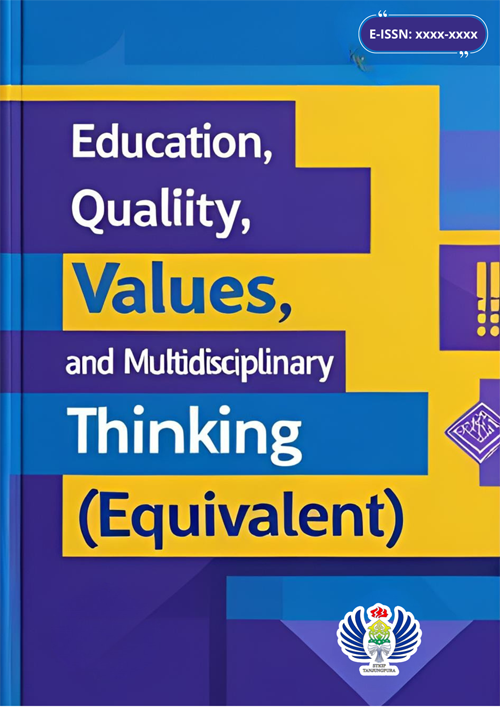ADDITIONAL MENU
Author Guidelines
1. Guidelines for Manuscript Title Formulation
The manuscript title plays a crucial role as the primary gateway introducing the research content to readers. Therefore, its formulation must be done carefully to ensure the resulting title is clear, concise, and highly informative. According to the guidelines of the Journal of Educational Management and Evaluation (JEME), the title must effectively describe three main elements: the primary focus or research topic, the scope encompassing the specific context or subject, and the objective or methodological approach used, if relevant. The title length is limited to between 5 and 20 words, excluding conjunctions such as "and," "of," or "in." This rule aims to keep the title concise yet comprehensive. Authors are strictly prohibited from using abbreviations, local jargon, or flowery language that could cause ambiguity. The formatting requires Title Case, where only the first letter of each main word and proper nouns are capitalized. Technically, the mandatory format is Book Antiqua font, with a size of 14 to 16 points and 1.15 line spacing to ensure optimal readability and a professional appearance in accordance with journal standards.
2. Abstract and Keyword Writing Provisions
The abstract serves as a comprehensive summary presenting the essence of the entire manuscript in a concise block of text. For the Journal of Educational Management and Evaluation (JEME), abstracts must be written in two languages: standard Indonesian, compliant with the Enhanced Indonesian Spelling System (EYD), and clear, concise academic English. The abstract length is strictly limited to between 150 and 200 words to ensure information efficiency. The abstract content must informatively cover five fundamental components. These components include: the background of the problem relevant to the theme of educational management and evaluation; specific and measurable research objectives; the main problem or issue that is the focus of the study; the research method explaining the design, approach, and analysis techniques; and the main research results along with their contributions to educational policy or managerial practice. It's crucial to remember that the abstract must not contain references, citations, or abbreviations that have not been explained beforehand. The entire abstract text is formatted using Book Antiqua 10-point font, single spacing (1), with justified alignment (left and right), and indented 1 cm from the left and right margins.
3. Introduction Section Guidelines
The introduction or background section forms the argumentative foundation of a scientific manuscript, aiming to establish the research context and justification. Authors should begin by outlining the general importance of research and innovation in efforts to improve the quality of educational management and evaluation at various levels. Subsequently, authors must present the actual problem by explaining factual conditions in the field that clearly indicate significant gaps or challenges in managerial or evaluative practices within educational units. Once the problem is identified, authors need to emphasize the urgency of innovation as a solution, both in the context of policy reforms and educational practices at local, national, and global levels. This section must also explicitly state the main research objectives and provide strong reasons why the research is relevant and important to conduct. Finally, authors need to clearly describe the projected contribution or impact expected from the research, especially concerning the strengthening of educational governance and evaluation systems. All arguments presented in the introduction must be supported by relevant scientific references from reputable journals. The formatting for this section's heading is Book Antiqua 13 pt bold with 1.15 line spacing, while the text content uses Book Antiqua 12 pt with single spacing.
4. Research Methodology Section Structure
The research methodology section describes in detail and transparently how a study was conducted. Its writing must be adapted to the type of research used, whether it is a qualitative study, quantitative, mixed methods, research and development (R&D), systematic literature review (SLR), or meta-analysis. Authors are required to provide a comprehensive explanation of various methodological aspects. This includes the chosen approach, research subjects or participants, location and time of implementation, and data collection techniques used, such as questionnaires, interviews, observations, or tests. Additionally, data analysis techniques relevant to educational management and evaluation issues must also be clearly outlined. For quantitative research, for example, the study design, sampling techniques, instrument details such as questionnaires or tests, and applied statistical analysis need to be explained. Meanwhile, for qualitative research, the focus of the explanation is on the approach, subjects, location, and techniques such as in-depth interviews or observations. An explanation of data quality assurance efforts, such as validity, reliability, or data credibility, must also be presented proportionally according to the type of research conducted. The heading for this section is formatted with Book Antiqua 13 pt bold and 1.15 line spacing, with the text content using Book Antiqua 12 pt and single spacing.
5. Presentation of Results and Discussion
The results and discussion section is the core of a research manuscript, where findings are presented and interpreted. In this section, authors must present the main research findings systematically and structured, whether in the form of quantitative or qualitative data, and directly link them to the previously established research problems and objectives. The presentation must be supported by valid and relevant data. After the findings are presented, authors must proceed to the discussion stage, where the meaning of these findings is deeply interpreted. The discussion must be critical, not merely reporting data, but also comparing research findings with relevant previous studies to show the research's position within the scientific landscape. Authors are also required to emphasize the specific contributions of the findings to the field of educational management and evaluation, both theoretically and practically. It is highly recommended that authors link the research results to applicable policies, local conditions, or partnerships with the business and industrial world (IDUKA), and explicitly convey the practical implications and future research directions. The format for this section's heading is Book Antiqua 13 pt bold with 1.15 line spacing, and the text content uses Book Antiqua 12 pt with single spacing.
6. Effective Conclusion Writing
The conclusion serves as the manuscript's closing, providing a final emphasis on the research's essence. This section should not be viewed as a mere summary of the results section. Instead, the conclusion must sharply highlight the core of the research findings and reassert their main contributions to the development of knowledge or practice in the field of educational management and evaluation. The author's primary focus in drafting the conclusion is on three important aspects: the meaning, practical impact, and potential application of the research results. Authors must be able to articulate what these findings mean in a broader context, how they can have a real impact on practitioners or policymakers, and how these research results can be applied for improvements in the field. It is crucial to avoid repeating data or analyses already presented in previous sections. The conclusion must be presented briefly, concisely, and directly to the point, providing readers with a strong final understanding of the significance of the research conducted. Technically, the section heading "Conclusion" is written using Book Antiqua font, 13 points, bold, with 1.15 line spacing. Meanwhile, all text within the conclusion paragraph uses Book Antiqua font, 12 points, with single spacing (1).
7. Bibliography Writing Guidelines
The bibliography is a vital component that demonstrates the scientific foundation of a manuscript and must be compiled with great care. The Journal of Educational Management and Evaluation (JEME) stipulates that bibliography writing must consistently use APA Style 7th edition. All referenced sources, whether scientific journals, books, proceedings, reports, or credible online sources, must be listed. There is a specific rule that at least 60% of the sources listed in the bibliography must be genuinely cited within the manuscript to ensure reference relevance and efficiency. Each reference entry must include complete information such as the author's name, publication year, work title, and publication source. If the source is accessed online, authors must include the DOI.











